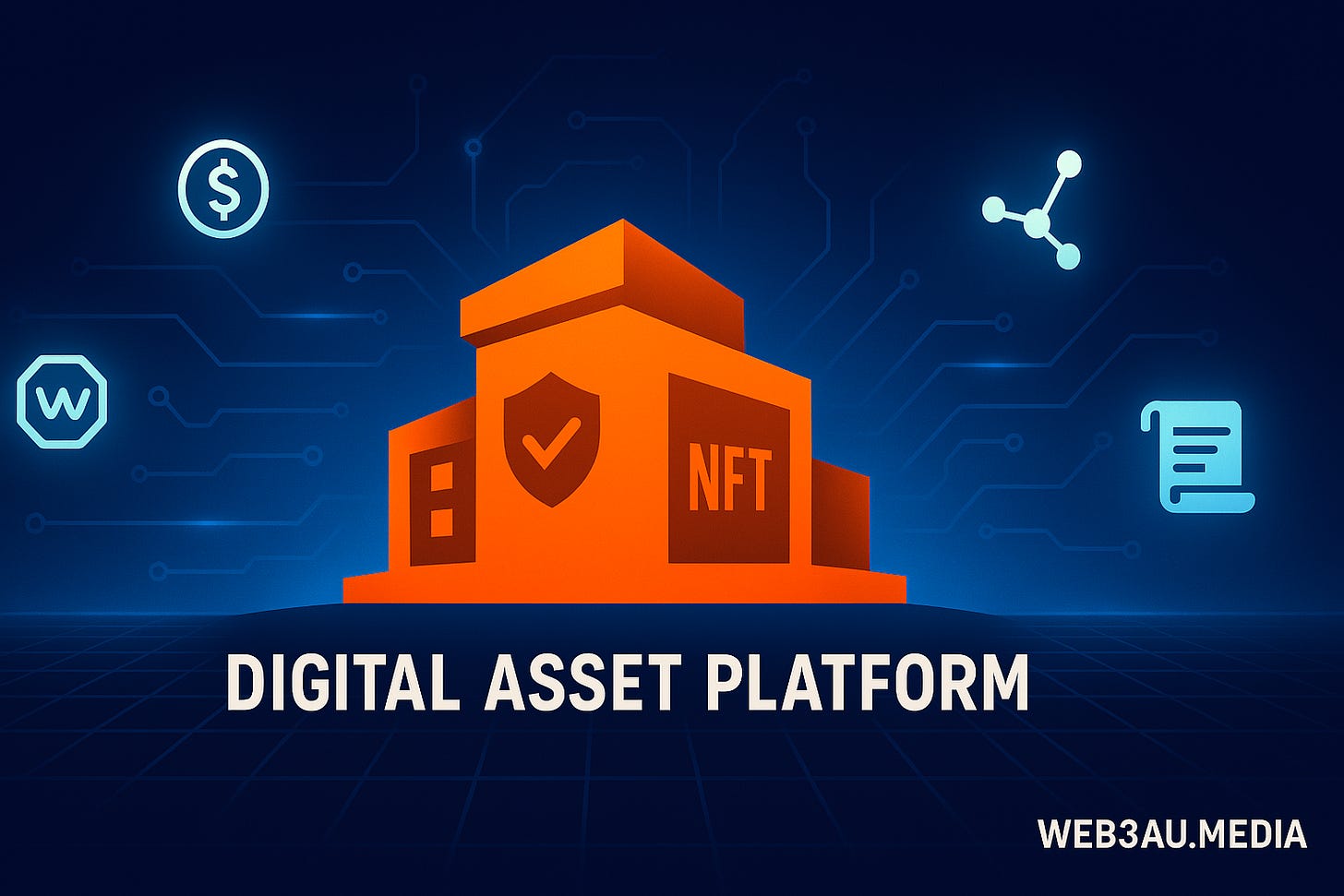Australia's DAP Regulation: Still Waiting in April 2025
Digital Asset Platforms
It's April 2025, and Australia's digital asset sector continues to operate without the specific regulatory framework promised over a year ago. The comprehensive proposal released by The Treasury in October 2023 laid out a detailed plan, but its implementation remains pending. For industry players, understanding the specifics of that proposal remains crucial as they anticipate potential future compliance requirements.
What is a Digital Asset Platform (DAP)?
Digital tokens are digital units or records that can be used to represent or refer to anything. Digital tokens include cryptocurrency tokens (like bitcoin) and non-fungible tokens (like for art and in game items).
Digital assets are digital tokens and the entitlement they grant to their holder.
Digital asset platforms are platforms that hold people’s digital assets for them. These are also known as crypto exchanges or brokers. They often provide other services that rely on this feature of holding client assets (such as trading).
The Treasury's 2023 proposal centres on regulating entities defined as 'Digital Asset Platforms' (DAPs). Fundamentally, a DAP is described as a 'multi-function platform that holds assets for customers'. This definition encompasses entities commonly known as crypto exchanges or brokers, but the scope is broader.
The proposal identifies the core regulated function as providing a 'digital asset facility' – essentially, an asset holding arrangement for digital assets or assets backing digital assets. The framework aims to regulate the providers of these facilities.
Two primary types of DAPs fall under the proposed scope:
Token Marketplaces (Account-Based): These platforms hold tokens for customers and issue 'platform entitlements' (rights to those tokens) recorded in an account-based system specific to the platform. Customers transact by exchanging these internal platform entitlements. (Think typical crypto exchanges).
Asset-Backed Token Issuers (Token-Based): These platforms hold any type of asset (which could include traditional assets or other tokens) and issue platform entitlements recorded using a token-based system (e.g., creating asset-backed tokens or 'wrapped' assets that circulate on public blockchains). The platform intermediates the exercise of entitlements for the token holders.
Crucially, the regulatory approach focuses on the function of holding assets and intermediating transactions, regardless of whether the platform uses an account-based or token-based system for its entitlements.
Key Proposed Requirements for Industry
Beyond the definition, several aspects of the 2023 proposal hold significant interest for industry participants:
Licensing Threshold: The requirement to obtain an Australian Financial Services Licence (AFSL) would be triggered if a platform provider holds over $1,500 for any single client or over $5 million in total client assets. Platforms below these thresholds would be exempt, potentially allowing for innovation at smaller scales.
Asset Holding Standards: Licensed DAPs would face minimum standards for holding client assets, largely mirroring existing financial services rules. This includes requirements for organisational structure, staffing, and resources.
Tokens: Specific 'additional standards for token holders' were proposed, demanding robust safeguarding (balancing security and access), continuous monitoring and auditing of custody software, specific requirements for using third-party custody software providers, and rules for using sub-custodians (who must also be licensed platform providers). Assets would generally need to be held on trust or via bailment (for tangible assets) to ensure bankruptcy remoteness.
'Financialised Functions' for Non-Financial Product Assets: A major component of the proposal was the introduction of specific minimum standards for certain activities when dealing with digital assets that are not classified as financial products under existing law (e.g., Bitcoin, Ether, utility tokens, NFTs representing collectibles). These 'financialised functions' include:
Token Trading: Intermediating exchange between users (requiring transparency, objective criteria for supported networks/tokens, specific protocols for execution, delisting, market makers, etc.).
Token Staking: Intermediating participation in network validation (requiring direct entitlement for users to unstake, objective criteria for assessing network/software security, clear risk disclosures).
Asset Tokenisation: Creating/exchanging platform entitlements backed by non-financial assets (requiring technical capacity for network evaluation, specific token standards enabling features like freezing/blacklisting, potential liquidity agreements).
Funding Tokenisation: Intermediating non-financial crowdfunding via tokens (requiring basic disclosures, specific non-fungible or fungible token issuance representing the backed product/service, non-tradeable tokens during development, milestone-based fund release).
Note: Generally, a single facility could not perform more than one financialised function.
Market Misconduct Monitoring: The proposal placed the onus on all licensed platform providers (not just trading platforms) to make reasonable efforts to identify, prevent, and disrupt market misconduct (like manipulation or wash trading) occurring on their platform, even for digital assets that are not financial products.
Listing Criteria & Disclosures: Platforms would need documented 'listing criteria' for assets made available and provide specific 'token disclosures' to users before acquisition, varying based on whether the underlying asset is a financial product, a non-financial product, or a token with no inherent entitlements beyond control (like Bitcoin).
'Custody Only' for Non-Financial Businesses: The framework proposed allowing businesses using tokens for non-financial purposes (e.g., gaming, ticketing) to use a licensed platform provider for custody without needing an AFSL themselves, via a specific 'custody only arrangement'.
The Unaddressed Areas
The 2023 paper explicitly noted that certain activities, like debenture-like arrangements (lending/borrowing, particularly stablecoins) and margin lending secured by non-financial product digital assets, were not covered by the initial proposal but were flagged for future consideration.
The Timeline That Wasn't
The original plan involved consultation on draft legislation in 2024 and a 12-month transition period. As of April 2025, this legislation has not been enacted, leaving the industry in continued regulatory uncertainty but with a detailed blueprint of the government's previous intentions.


